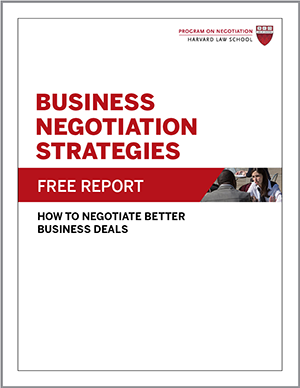
In negotiation, one great deal can beget another. For the National Basketball Association (NBA), its stellar 2016 national television contract begat dozens of stellar salary negotiations for top players and even mediocre ones. But after the boom year passed, players’ expectations bounced up against reality. The story, which could repeat itself after the next TV deal in 2025, reminds us of the risks of overlooking the potential long-term impact of our salary negotiations.
Charging Ahead
In October 2014, just about everyone involved in the NBA’s nine-year $24 billion deal giving networks ESPN and TNT broadcast rights to the league’s regular-season and postseason games felt like a winner. The NBA’s annual TV revenue was set to nearly triple starting in 2016, from $930 million to $2.6 billion. The networks expected to benefit from adding more regular-season games to their schedules while keeping technology companies such as Google and Apple out of the bidding for another nine years. And players heading into free agency prepared to set new salary records.
The NBA foresaw a problem, though: Teams’ annual salary cap is tied to league revenues. This meant the salary cap, which had grown steadily at around 3.6% per year for a decade, jumped 32% in 2016—from about $70 million per team per year to $94.1 million in 2016, writes Sam Quinn for CBS Sports. Players entering free agency in 2016 were likely to be able to negotiate amazing long-term deals. But if teams spent the TV money all at once, they’d have little left to spend on free agents in following years, setting up arbitrary pay inequities league-wide. In addition, top teams might try to stockpile talent in 2016, cementing their dominance for years and arguably diminishing the NBA’s appeal to fans.
To try to address these risks, the league proposed to the National Basketball Players Association (NBPA) that they distribute the players’ guaranteed 51% of profits from the TV deal evenly among players right away, then artificially slow annual salary-cap increases—a process called “smoothing”—instead of allowing a one-year jump in 2016. But union executives rejected the proposal, saying they were offended by the notion of artificially lowering players’ earning potential, according to NBC Sports.
On the Rebound
As the league predicted, NBA teams went on a spending spree in 2016, signing almost 150 free agents to deals worth more than $3.6 billion. To take one example, Timofey Mozgov, a decent center but hardly a standout, negotiated a four-year, $64 million deal with the Los Angeles Lakers—more than twice what NBA Most Valuable Player Stephen Curry was earning.
Many of the 2016 deals were bad bets. Among 26 players who signed contracts worth a collective $1.7 billion, none was chosen for the All-Star game that season, and many performed below expectations.
Having blown through so much cash in 2016, teams had little left over in 2017 and 2018. Even as the salary cap climbed to $102 million, spending on player contracts dropped from $3.6 billion in 2016 to $2.4 billion in 2017, then to about $1.7 billion in 2018.
Setting Up Salary Negotiations
As a result of the uneven spending, “the sheer monetary values of players are connected less than ever before to their ability,” writes Ben Cohen in the Wall Street Journal. And as predicted, dominant teams such as the Golden State Warriors stayed on top, leading to complaints that the league isn’t competitive enough. Critics have said the NBPA could have avoided these issues by accepting the league’s smoothing offer in 2015.
Salary-cap smoothing is a hot topic again as the NBA prepares to negotiate what will likely be a far more lucrative broadcasting contract for 2025, one that might raise the salary cap to a whopping $171 million per team, according to Jabari Young of CNBC. Smoothing will undoubtedly be on the table for the next collective-bargaining negotiations between the league and the NBPA in the summer of 2022.
Having experienced the drawbacks of cap spikes firsthand, many players might be more amenable to the idea, writes Sam Quinn of CBS Sports. Moreover, he notes, the league and the union used smoothing to cope with the volatility of the Covid-19 pandemic. With league revenues tanking as a result of the suspended 2019-20 season, the two sides agreed to keep the salary cap stable to prevent it from decreasing by tens of millions of dollars. The compromise kept trades and negotiations moving until revenue bounced back. The deal “proves that the two sides are capable of working together to solve unorthodox problems,” writes Quinn.
Winning in Salary Negotiations
When considering how to negotiate salary, job negotiators and employers alike can learn the following lessons from the NBA’s salary-cap issues:
- Prepare for domino effects. It’s common for each of our negotiations to affect our subsequent negotiations. When negotiating salary, carefully think through the possible long-term effects of a deal—including a great deal—and prepare for them.
- Factor in fairness concerns. An organization’s financial ups and downs can significantly affect salary negotiations. Because fairness concerns loom large for employees, strive for compensation negotiation strategies that will be equitable over time.
- Learn from the past. Don’t waste failed salary negotiations; instead, learn from them. Examine where your salary negotiation tactics might have gone wrong, and figure out how to correct course.
How have you or your company coped with Covid-19 volatility in salary negotiations?




